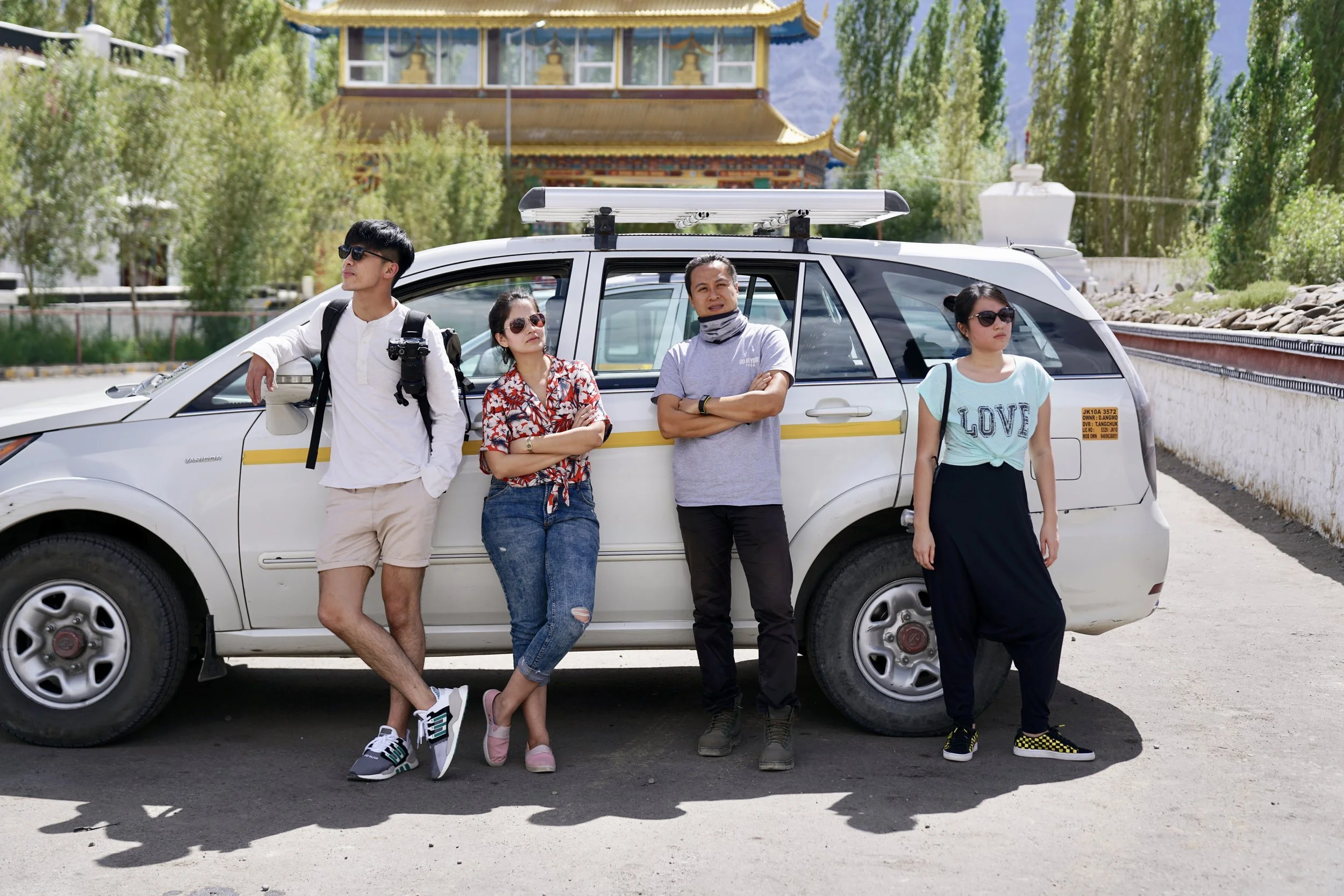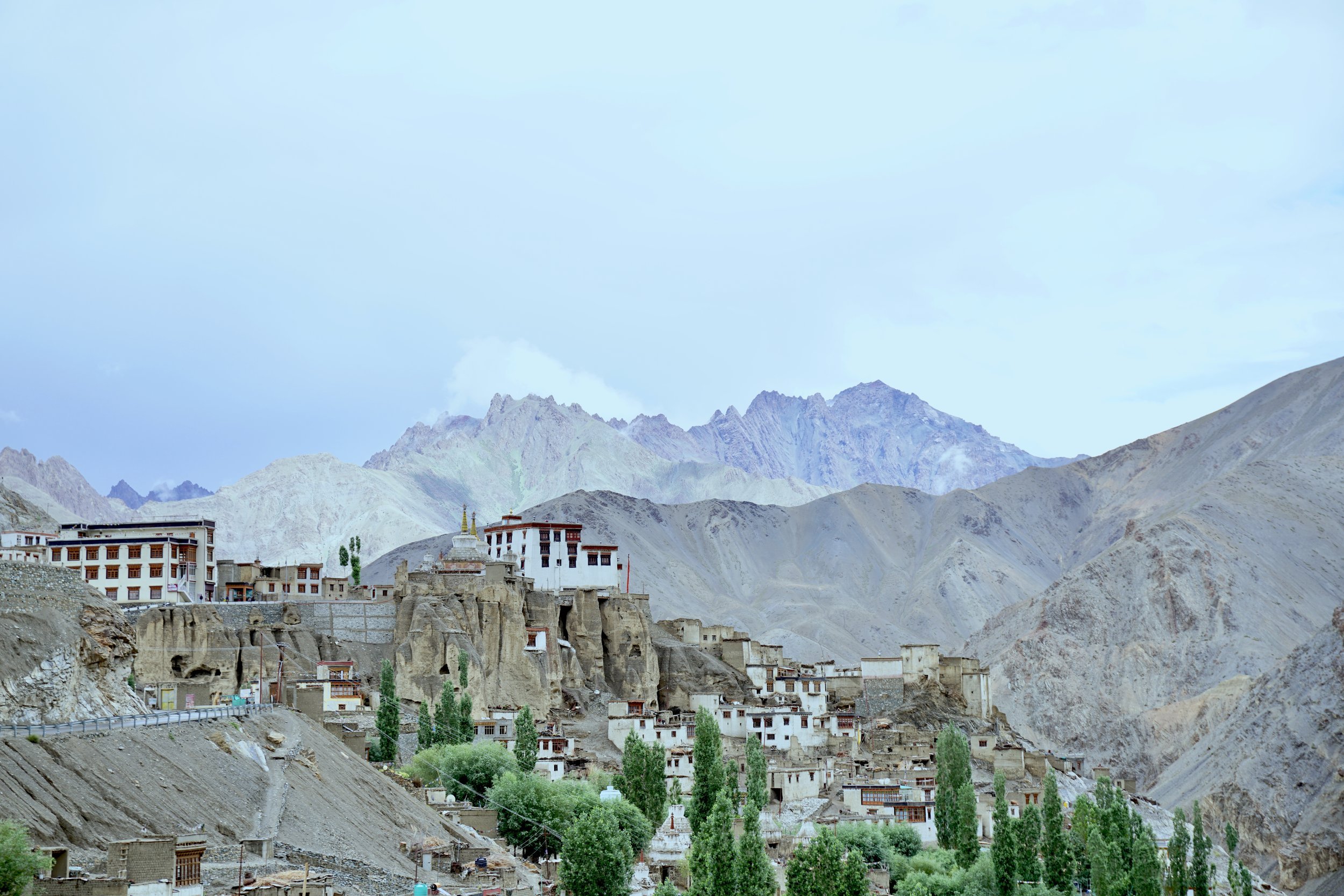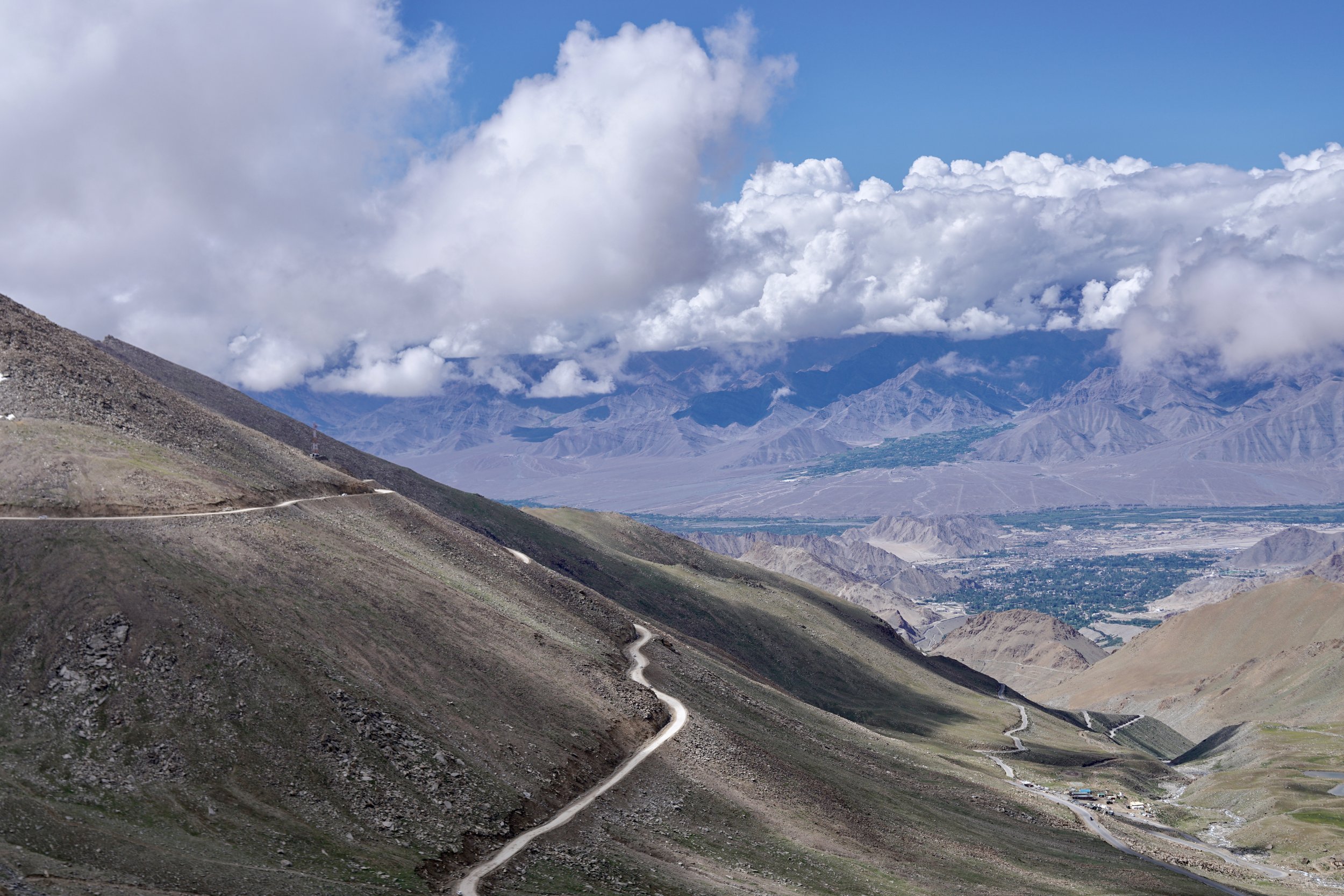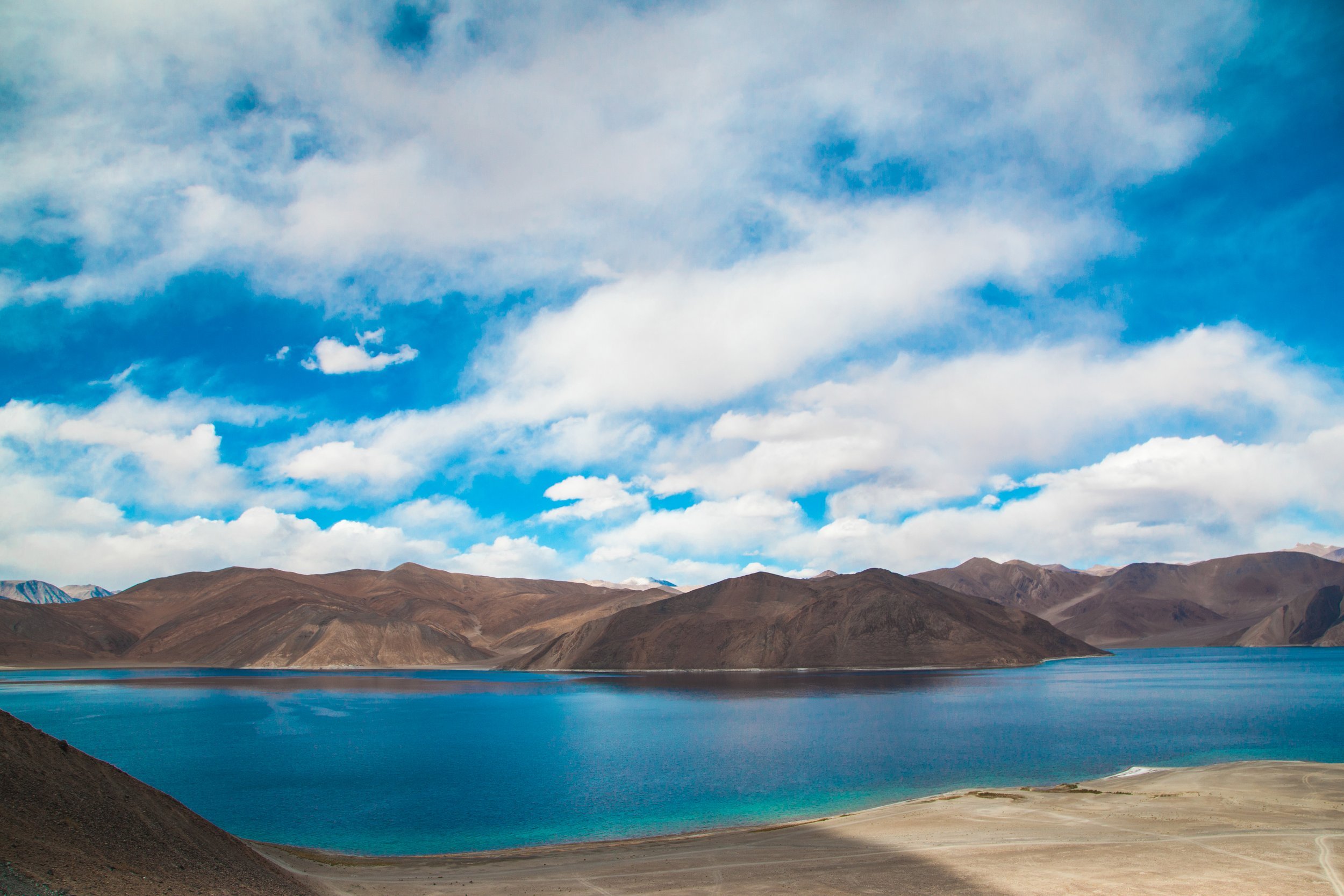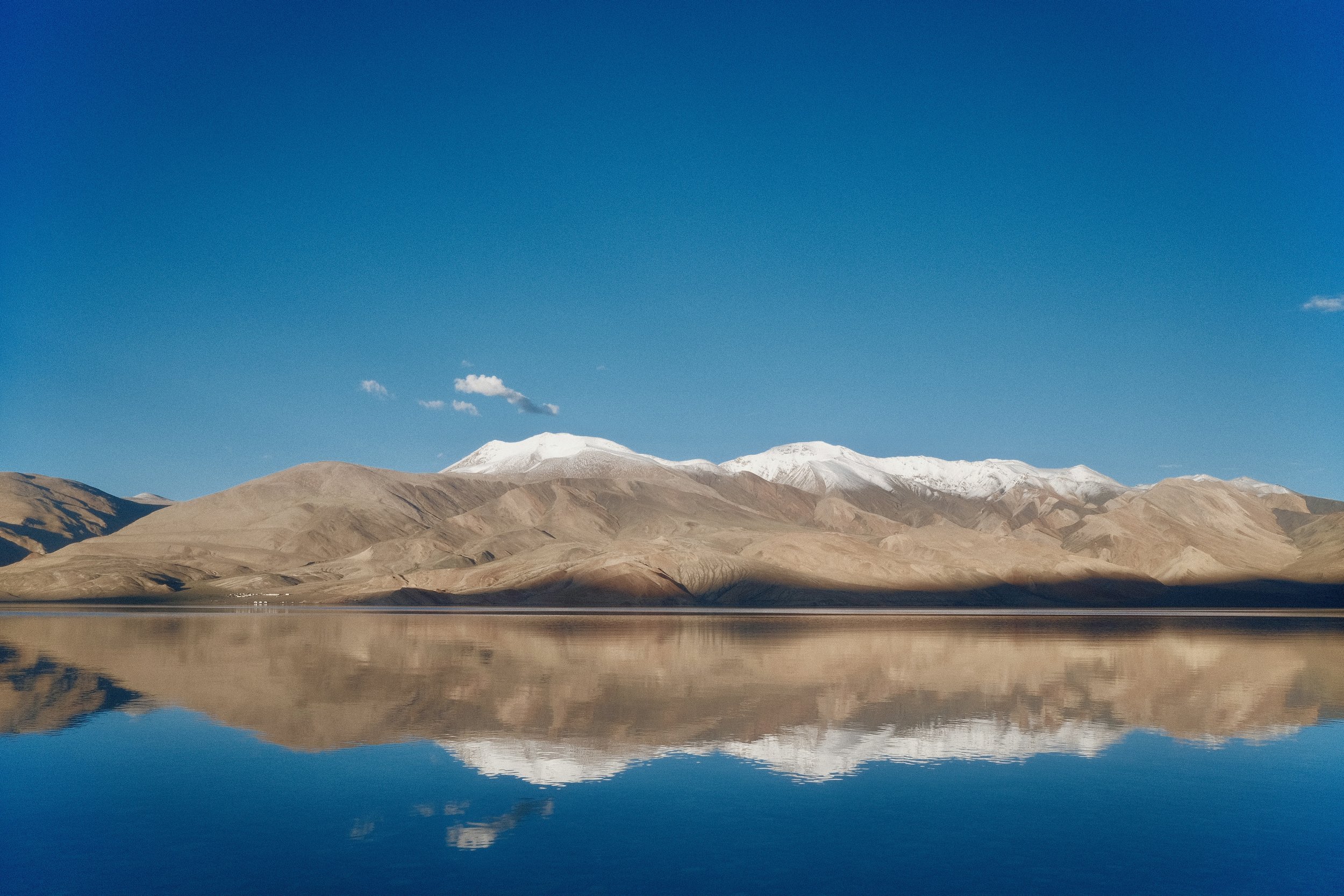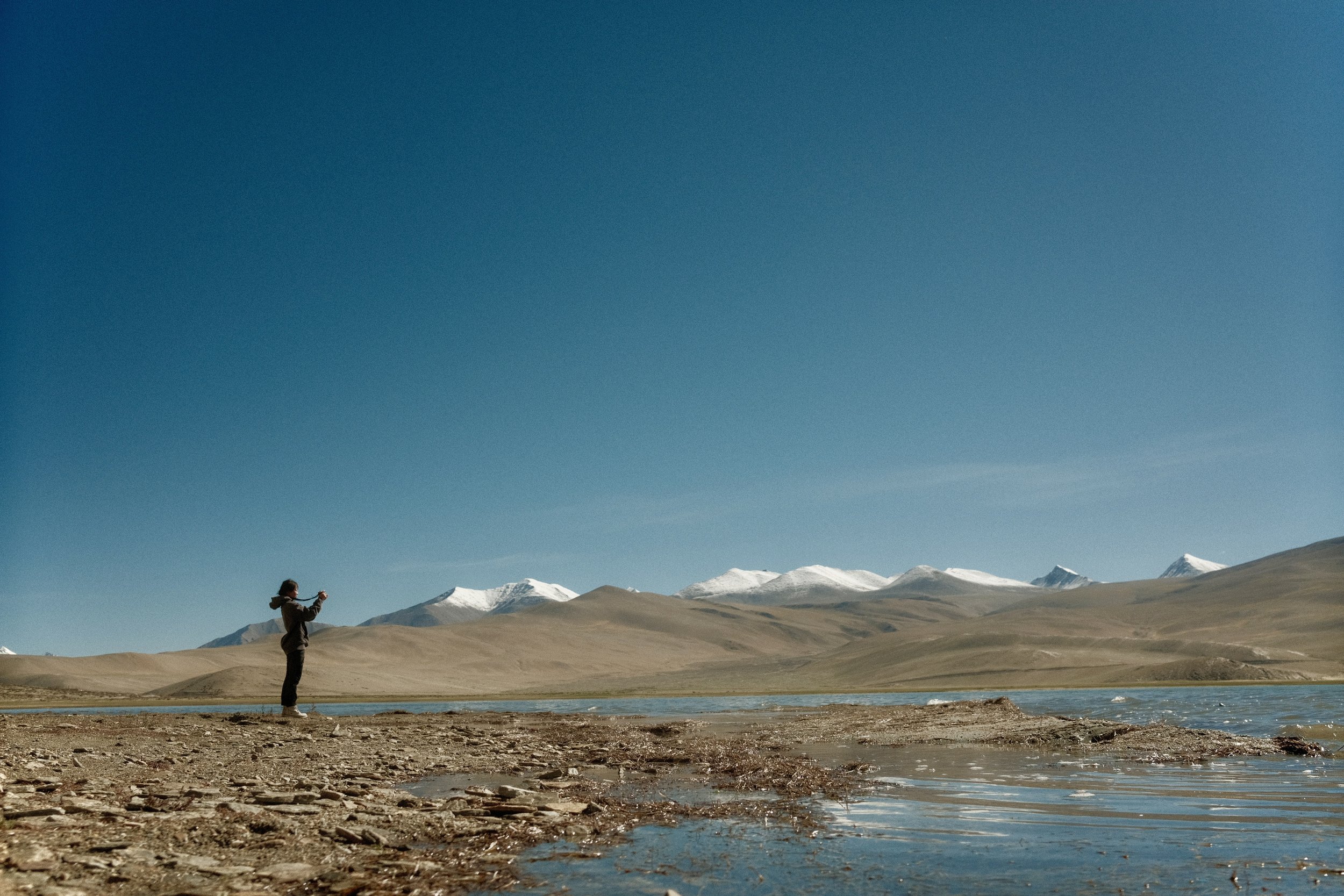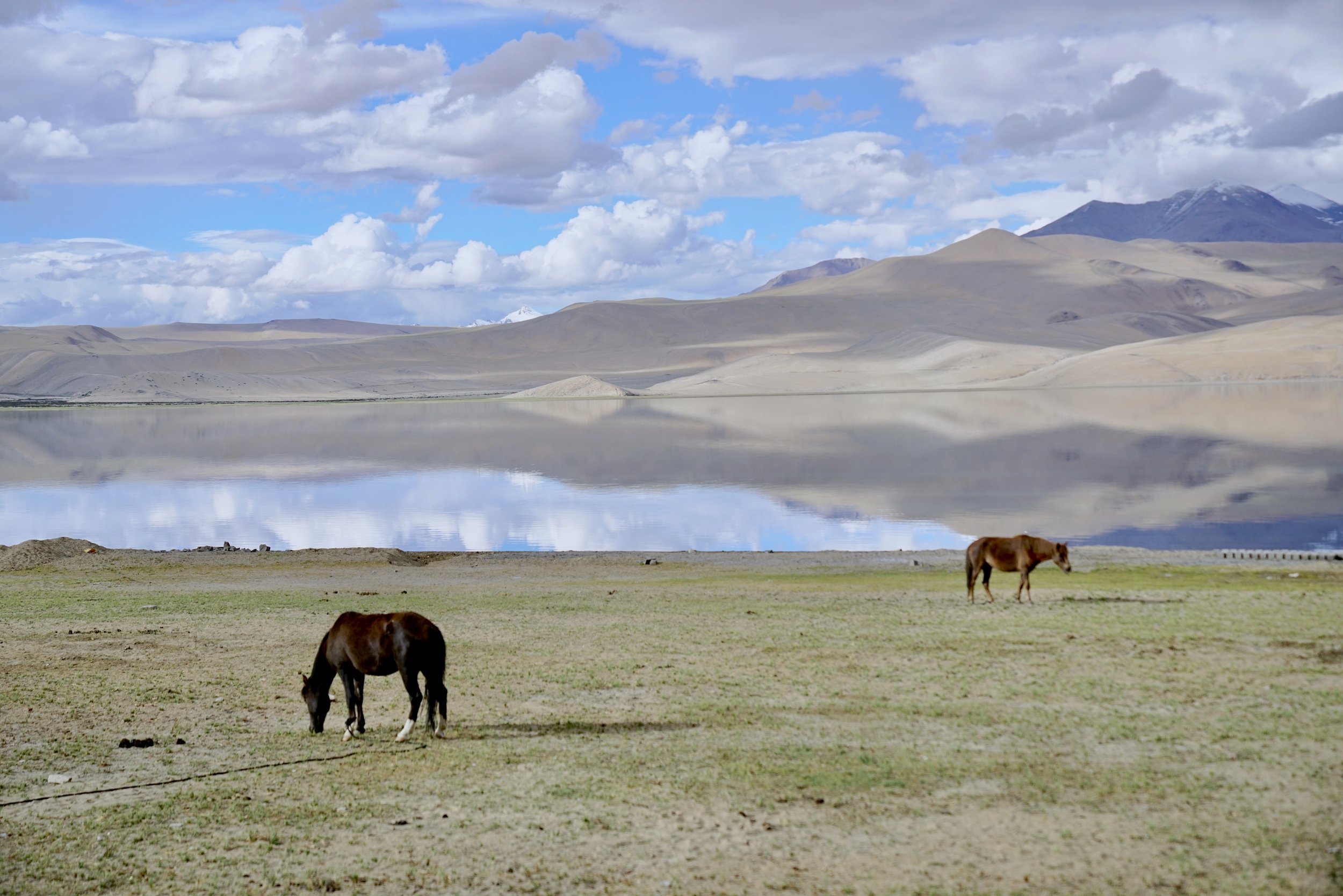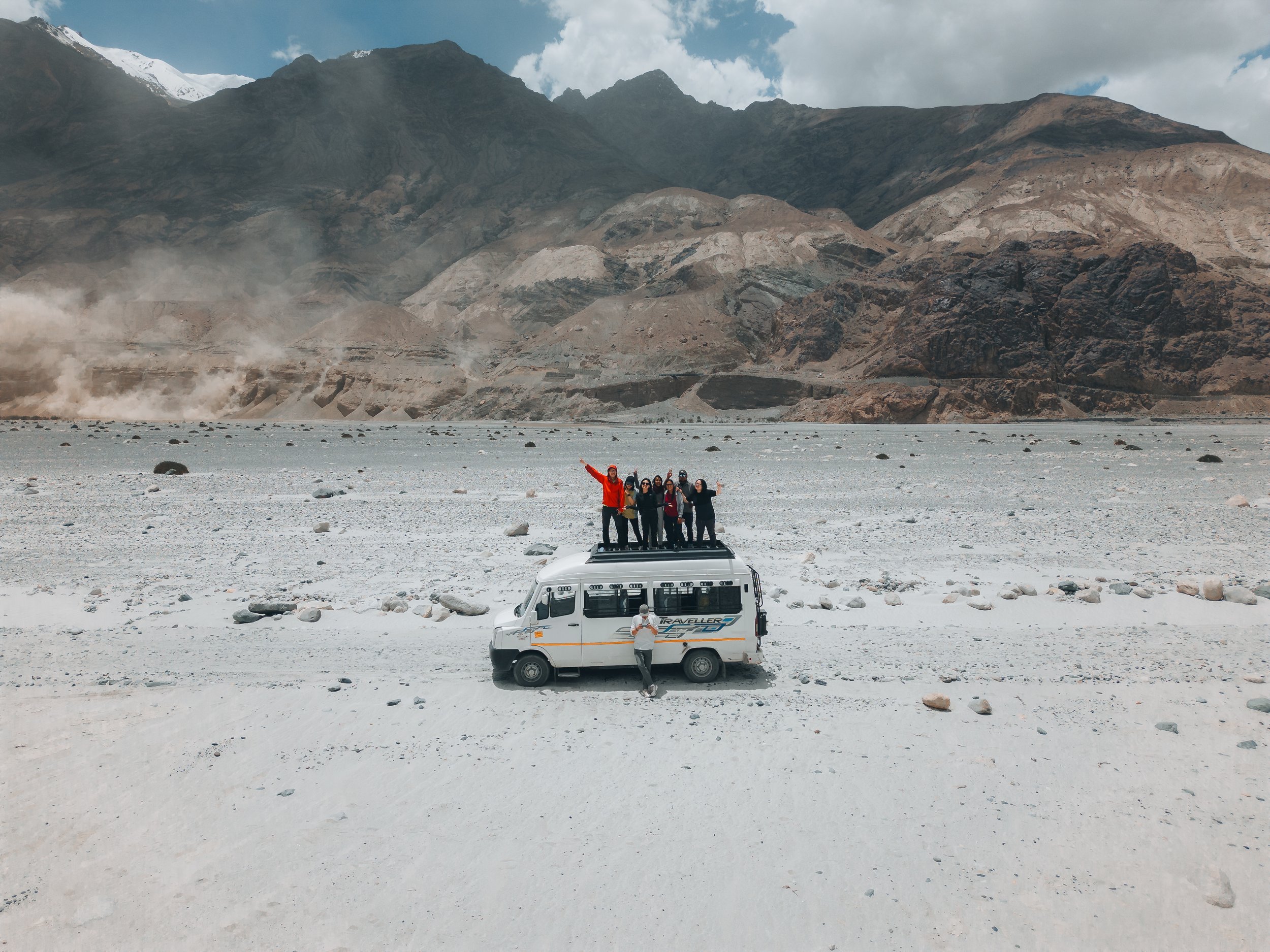Venture to The Roof of The World: Ladakh, The Little Tibet
This video is a brief representation of Ladakh and does not represent the exact itinerary that is stated in the sign up article below
Discover Ladakh, a land of rugged grandeur and ancient traditions nestled in the Himalayas. Often called "Little Tibet," Ladakh boasts stunning landscapes and a rich cultural heritage. Explore ancient monasteries, like architectural wonders perched on cliffs, and witness a unique blend of Tibetan and Indian influences.
Ladakh's beauty extends to Pangong Lake, with pristine waters against rugged mountains, and Nubra Valley's surreal high-altitude deserts with double-humped Bactrian camels. It's also a spiritual sanctuary for the Dalai Lama, leaving a lasting mark on the region's culture.
Join Beyond Expeditions in unveiling Ladakh's secrets, India's hidden gem. Witness pristine Pangong Lake, embrace Nubra Valley's surreal landscapes, and discover the spiritual legacy of the Dalai Lama. Are you ready for an enchanting journey? Let us be your guide!
Day 1: Welcome to Leh, Ladakh
After a more than 12 hour flight, upon arrival, you will be greeted by the fresh mountainous breeze of Ladakh. Afterwhich, if you look a little bit lower towards your eye level, you’ll be greeted by your friendly expedition guide and driver! They will be meeting you at Ladakh’s international airport, Kushok Bakula Rimpoche International Airport, and whisk you away straight into the city center.
Ladakh’s hotels are undoubtedly of top notch quality, but Leh Bazaar is even better. What better way to acclimatise to the Ladakh culture than to go window shopping (and maybe purchase a few things) while inhaling the exquisite air of Ladakh? Don’t get too excited browsing through every little trinkets you see there, there is definitely plenty of time for you to return! Being away from the hustle and bustle of metropolitan Singapore and in Ladakh, which is quite the complete opposite of Singapore, there will definitely be inevitable difficulties that are but not limited to culture shocks and environment shocks. After all, it’s not every day you get to see such a majestic view with little to no high-rise buildings and crisp air so sharp it could cut through anything. Once you have been immersed into Ladakh’s rich culture, it won’t be long before time starts to pass as quick as lightning, and your first day in Ladakh will come to an end.
Day 2: Drive Up to Majestic Historical Monasteries
On the 2nd day of our expedition, it’s time to learn even more about Ladakh’s deeply rooted heritage! Your trusty expedition driver will help to bring you to Thiksey & Hemis Monastery. The Thiksey Monastery is a temple that is affiliated with the Gelugpa sect of Tibetan Buddhism and is located on the top of a hill in Thiksey (as the name suggests).
Home to the Maitreya Buddha statue, which is approximately 15m high and took almost 4 years to build, this magnificent temple is dedicated to Goddess Dorje Chenmo, a deity who protects monasteries. Due to the beautiful colours that adorn the monastery, its red, yellow and white hues attract monks and tourists all around. This ethereal monastery is definitely one of the many highlights of this expedition. Next up, you’ll visit the biggest and richest Monastery of Ladakh, Hemis Monastery! Built in 1630, it’s sheer size is indeed intriguing and impressive for tourists all-year round. The big gates leading to the entrance will engulf you yet keeping you on your toes as you feed onto Ladakh’s rich culture. The stones of the walls are beautifully painted with religious figures and a huge depiction of The Wheel of Life. The best is yet to come, the Monastery hosts one of the most celebrated festivals every 12 years which is deemed as the Hemis Festival. Ladakhis from remote areas gather to sell local ware, various rituals and masks performances are being carried out as locals celebrate the birth anniversary of Guru Padmasambava. The energy here is palpable and it is definitely a sight not to be missed.
Now, before you get too distracted by the beauty of Hemis Monastery, let’s move on to admire the purity of a well-known Bhuddist white-domed chorten known as the Shanti Stupa. The Shanti Stupa serves as a peace pagoda, built by a group of Japanese Bhuddists who believed that they would be able to bring back to life the Bhuddist culture in India. It was even inaugurated by the 14th and current Dalai Lama, Tenzin Gyatso, in August 1991. Apart from the religious significance of the Shanti Stupa, another reason for its gain in popularity amongst tourists is due to the panoramic view of Ladakh that it provides. Perfect for taking pictures, the Shanti Stupa is the ideal attraction for anyone looking to take some jaw-droppingly beautiful photographs.
Day 3: Get cosy with a Ladakhi family at Timosgam Village
Day 3 begins with an exhilarating ride along the waters of the Zanskar River! Be amazed by the beauty of the landscape and get ready to be soaked. You’ll end the day in a quaint homestay in Timosgam Village, where you will get to have a first hand experience of how a Ladakhi family would live and carry out their daily activities. Just a heads up, it’s definitely not something you would see in fast-paced Singapore!
Rise and shine, welcome to Day 3! On this day, most visitors would have naturally started to acclimatise to the climatic conditions of Ladakh, one of them being the high altitude. Hence, any discomfort that one would normally face when in high altitude countries such as Acute Mountain Sickness (AMS) would have effectively subsided. Do you know what that means? That means that it’s time to get cracking! What better way to get cracking than an adrenaline white water raft ride along the waters of the Indus River and Zanskar River!
The day would begin with an energising breakfast and a cup full of adventure! Get your wet attires ready to go as your expedition driver will drive along the road of two of the biggest rivers that connects all the way to Pakistan! Strap yourself onto the life jackets, clip onto those helmets and hold onto those paddles hard! As the adrenaline builds up, look out the window, hear the loud rapids crashing onto the rocks and the cries of excitement of locals and tourists. It is time….. to conquer your fears, crash into some waves and do some extreme white water rafting!
After which, you’ll journey to the first monastery of the day: Likir Monastery. As one of the oldest monasteries in Ladakh, it was established in 1065, which would mean that it holds 957 years of Ladakhi history! The monastery is also home to 120 Buddhist monks and serves as an educational institution for approximately 30 students. As such, you would expect that the monastery be decorated with antiques and manuscripts that tell the stories of Ladakh so detailed that no one would ever be able to match that level of meticulousness.
Before the day ends, you will have the honour of staying with a Ladahki family in Timosgam Village, which is a little kampung (as we Singaporeans would call it) that has not be greatly influenced by modern tourism, thus effectively retaining majority of its authentic Ladakhi culture. Here, you will be spending the night with the Ladakhi family, learning about the living patterns that are unique to their culture and also experiencing the serenity of Ladakhi. You will also get to taste true blue Ladakhi cuisine, which contrary to popular belief, is not Tandoori Chicken. What it is exactly, well, that remains a mystery for you to unlock when you visit Ladakh with us.
(The best time to do white water rafting in Ladakh will be between June to September as it is a seasonal activity!)
Day 4: Immerse in the beautiful Ladakhi Festivities
After learning about Timosgam Village, it’s time to move on to Aryan Village, which is located near the India-Pakistan border. Otherwise known as the Aryan Valley, this village is significantly secluded from modernity, surrounded by clear river streams, rich soil, organic agriculture and pollution-free air. During cultural events, women in the Aryan Village will use vibrantly coloured flowers to accessorise their head, forming a floral head garment that showcases the beauty of Ladakh.
You begin your day by bidding goodbye to some of the loveliest hosts in Timosgam Village. Prepare those tissues, it will be tough to say goodbye to this little kampung. It is truly a once in a lifetime experience to live in a Ladakhi homestay, to eat and live like a local Ladakhi. Fret not, there will be plenty more of local villages to immerse yourself in. Buckle up (literally), as you drive off to your fourth Monastery visit - Lamayuru Monastery! It is known for its annual masked dance festival, where gompas gather round to play during this special occasion. Following the Tibetian calendar, Lamayuru Monastery hosts this festival on the 2nd and 5th months of the calendar! Remember to ask your driver to stop along the way as you’ll come across even more scenic landscapes at Moonland, Lamayuru! It is honestly mind-blowing as you will witness some of the most unique rock formations similar to that of planets like Mars and our Moon!
Ending the day on a relaxing note, you’ll arrive in Aryan Village where you’ll be staying for the night. Immerse yourself into the majestic beauty of Ladakhi heritage and watch the sun set along the horizon. There are also cultural practices and festivals in Aryan Village that are celebrated during the different seasons throughout the year, and if you visit Ladakh at the right time, you will get the opportunity to witness this extravagant moment! For a village that has not been very exposed to modern day tourism, it is extremely fortunate that the Aryan Ladakhi culture is still very much intact and not eroded by globalised tourism. Isn’t it refreshing to know that globalisation did not erode every culture in the world?
Day 5: Rest and Relax
After many days of visiting different monasteries and villages, this day of the expedition is specially catered to allow one to slowly digest all the experiences that you’ve been through in the past 4 days. Hence, Day 5 will be a rather free-and-easy day for you! The day would begin with a reflection-based drive back to Leh, and a quick visit to Alchi Monastery while on the way there.
The Alchi Monastery, which is a monastery complex consisting of 4 settlements, with Alchi Village being one of the settlements. Back in the day, when Alchi Monastery was first established, the Tibetan Lama-king at that time, Yeshe-ö, wanted to spread the notion of Bhuddism across Ladakh. In order for him to do so, he allocated 21 scholars to the trans Himalayan region. As we all know, the Himalayas is known for its harsh climatic conditions, and out of the 21 scholars, 19 of them had sadly succumbed to the treacherous cold. Some tourists have mentioned that when things get quiet, you will be able to hear the chants of the scholars, presumably to protect the monastery from all negativity. So, when you’re there, be sure to keep your ears open!
Day 6: The Roof Of The World
Welcome to Day 6 of the Ladakh experience, where on this day, you will get to drive past the world’s highest motorable road: Khardung-la Pass! Khardung-la Pass is a mountain pass situated at a whopping elevation of 5359m. As expected, with the high elevation from sea level, the view from this motorable pass is spectacular.
Despite the high altitude conditions which could take one’s breath away, the view from Khardung-la Pass will take your breath away first. Be sure to spend some time above, snap some beautiful photos and soak the amazing energy that surrounds the mountain. Construction of the Khardung-la Pass was officially completed on 27 August 1973 and was carefully crafted by the Indian Army. This road is often used to travel between Shyok Vally and Nubra Valley where you guys will be heading to next.
Day 6 proves to be the main highlight for most tourists as it is truly the start of some amazing adventures! Be prepared to be disconnected from the world for the next couple of days and immerse yourself amongst these giants. On your way to Nubra Valley, you will make a pit stop to ride onto ATV’s and zoom across the sand dunes with nothing but strong winds in your face. Feel free, rev up the engine and shout to your heart’s content as you ride across the desert.
Upon reaching Nubra, your driver will be stopping at your final monastery visit. Diskit Monastery is a major tourist attraction in the Nubra Valley, not just for its incredible location, but for the 106 feet Maitreya Buddha statue which is located just below the monastery. It is 15 kilometers northwest off the Khalsar-Panakil route, right at the edge of the desert in the Nubra Valley and along the Pakistan borders.
It’s been a long day, but you’re in for a treat if you are a fan of camels! Bike tours may be all the rave in Ladakh to witness the beautiful landscape, but wait till you hop on some camels. It’s a whole new world out there! Unlike the rest of India where you’ll meet single hump camels, here at the Ladakh Camel Safari, feast your eyes on the majestic cheerful Bactrian camels! In fact, camels have been one of the major modes of transportation in Ladakh for centuries, and were used for transportation in the 17th, 18th & 19th centuries in the historic Silk Route. Today, you can be part of that history by riding off towards the sunset on these gentle beasts.
Afterwhich, the last few hours of Day 6 will be spent at a unique guesthouse or tourist camp. Don’t sleep too early as you’ll miss out on the beautiful night sky spangled with a thousand stars. It is truly a wonderful sight.
Day 7: Witness the serene Panggong Lake
Having spent a week in Ladakh, are you starting to get tired of the mountainous terrain? Well, today, you’ll get to see a lake instead! As Ladakh is a region untouched by modern civilisation, the natural beauty of nature’s finest masterpieces are also retained. Your friendly expedition driver will be transporting you to Panggong Tso, accessed via Shyok River, a lake that spreads across the eastern part of Ladakh and West Tibet.
Panggong Tso is an endorheic lake, meaning that it’s a lake with no outlets around it for any entrance or exit of other water. In layman terms, Panggong Tso is a landlocked lake. To any aspiring Geographers out there, you would probably know that Panggong Tso has become a point of dispute and tension between India and China. With that being said, the portion of Panggong Tso that is under Indian governance is what you will be seeing while in Ladakh. The lack of human intervention is truly a blessing for Panggong Tso, for its fresh, clean and crystal clear waters reflect the beauty of Ladakh onto the water surface, as if it was painting a Ladakhi masterpiece.
For movie critics, Panggong Tso is also the place for you. If you take a closer look, you would probably find the lake familiar. That’s because the Panggong Tso was used as a filming location for one of the scenes of a famous Bollywood Movie — 3 Idiots.
To end off the day, your awesome expedition driver will whisk you back to the tourist camp or a guesthouse to enjoy the night under a warm campfire accompanied by the dazzling stars.
Day 8: Adventure awaits at Tso Moriri
On Day 8, there are 2 options for you, one being to head back to Singapore, and the other being a 3-day extension for the Ladakh trip. If you would like to select the former option, you can skip right over to Day 10 of this article, whereby the journey back to Singapore will be elaborated on there. However, if you’ve chosen to stay in Ladakh for a few extra days, you’re in for a load of fun and relaxation!
First stop would be to Tso Moriri, also known as the Mountain Lake. This lake is located on a plateau in Ladakh, with the surrounding land areas protected by Tso Moriri Wetland Conservation Reserve. This beautiful lake is 19km long and 3m wide, with the water being an intensifying blue colour. Afterwhich, you will head off to Chumathang Hot Spring. This hot sulphur spring is believed to have medicinal properties, and rumour has it that is can cure some skin diseases. Unlike other hot springs you may see, Chumathang Hot Spring is surrounded by mountains and shrubs, making it secluded from all forms of civilisation (other than yourself or your companions). If you would like to spend the day there, not to worry, for there are eateries with delicious food as well as well-maintained bathrooms for you to freshen up after soaking in the hot spring. You will be spending the night in Tso Moriri, where you might get the chance to interact with nomadic Changpa people who can be found selling interesting one-of-a-kind items.
Day 9 : Recuperate in Leh
Today, you will be going on an adventure to India’s third highest motorable road, which is the Chang-La pass. This road will lead you back to Leh.
After such a chilly morning experience on the third highest motorable road , it is time to head back down to a lower altitude to rest and relax in the hotel for your final night. The rest of the day is free and easy for you! You can revisit Leh Bazaar to see the many souvenirs and handicrafts made by the locals. You can even purchase some of them to support the local businesses! From Pashmina Shawls to other handicraft trinkets made by Ladakhis, the choices are limitless. Hence, a good tip if you’re planning to go there would definitely be to bring a larger luggage, one that can fit more than what you bring to Ladakh. Alas, your last night in Ladakh will be spent staring at the star-filled night sky from the comforts of your hotel room.
Day 10: Home Sweet Home
Today is the last day! Our expedition driver will pick you up from your hotel and send you to the airport. The remaining 2 hours before your flight can be used to make any last minute purchases as well as to brace yourself for the back-to-work Singapore life that nobody wants. Your expedition driver is sad to see you leave, and so will you. Reaching back to Singapore, your country welcomes you back home! However, when nature calls, Ladakh will be waiting for you to come back and embrace nature once again.
TERMS & CONDITIONS
Upon payment of 50% non-refundable deposit, you will secure a spot for 1x Ladakh group expedition. The total price for the trip is S$5,990 nett inclusive of flights. The remaining 50% is to be paid 8 weeks prior to trip commencement.
-
Round-trip economy flights from Singapore to Leh, Ladakh (2 ways)
Airport Transfers to and from Leh
Accommodation for all nights (twin sharing hotel rooms in Leh, homestays, guesthouses, tourist camps in the countryside)
Private Toyota Innova/Mahindra Zylo vehicle + local Ladakhi driver, petrol
English speaking local Ladakhi guide
All meals stated and a bottle of water per day
All staff costs including their fees, insurance, equipment
All monasteries’ fees
All interline permit fees
All government and local taxes
All activities stated including camel-riding, white water rafting , ATV (all of which are seasonal activities) and local homestays
-
Indian E-Tourist Visa
Personal Travel Insurance
All personal expenses including during layover in New Delhi covering accommodation and food
Medical and emergency evacuation expenses including emergency rescue flights (if needed)
Oxygen cylinder - brought along during expedition (once activated, S$100 nett will be charged to client(s))

